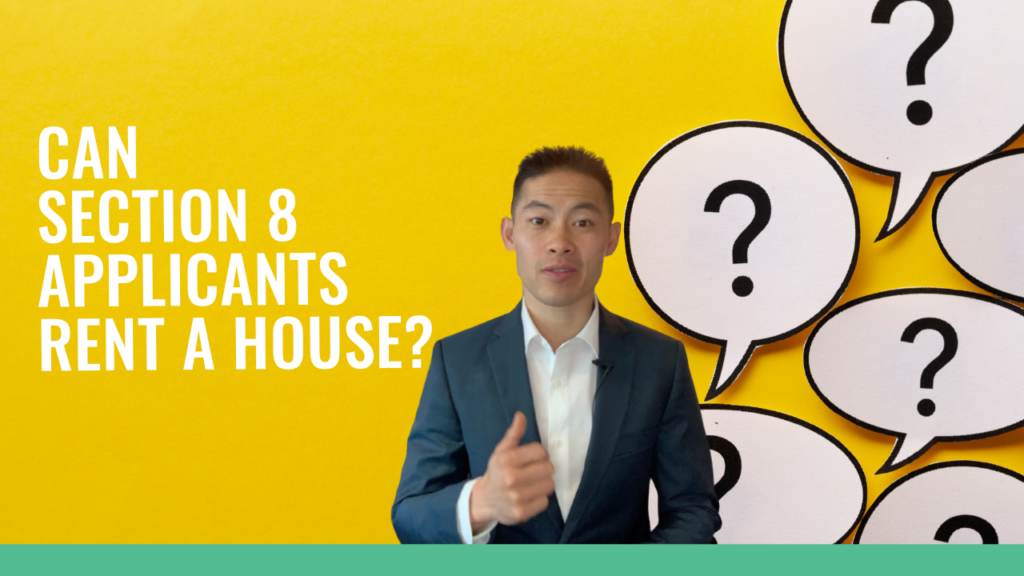Renewal Ready: 4 Strategies for Encouraging Long-Term Leases
Reading Time: 7 minutesIn today’s dynamic market, securing long-term leases is a win-win for both landlords and tenants. Landlords benefit from predictable income and reduced vacancy rates, while tenants enjoy stability and the ability to focus on their lives and businesses without the disruption of frequent moves. But how do you convince tenants to commit to a longer…

In today’s dynamic market, securing long-term leases is a win-win for both landlords and tenants. Landlords benefit from predictable income and reduced vacancy rates, while tenants enjoy stability and the ability to focus on their lives and businesses without the disruption of frequent moves. But how do you convince tenants to commit to a longer lease term?
This article explores key strategies to cultivate lasting relationships and encourage long-term residency.
Table of Contents
Unveiling the Why Behind Lease Length Decisions

Securing long-term leases hinges on understanding the underlying factors that influence tenant decisions. Here’s a deeper dive into these key considerations:
Life Stage
- Young Professionals: Early career individuals may prioritize flexibility for potential job changes or further education. Shorter leases might be more appealing.
- Growing Families: Families with young children often seek stability and familiarity within a neighborhood. Longer leases can provide peace of mind and minimize disruptions during crucial developmental stages.
- Empty Nesters: This demographic may have more flexibility regarding location and might prioritize features like lower-maintenance living or proximity to amenities. Lease length might be less of a concern.
Business Needs
- Start-ups: New businesses might crave flexibility to accommodate potential growth or unforeseen changes in their operations. Shorter leases offer adaptability.
- Established Businesses: Businesses with a stable trajectory might prioritize long-term leases to secure a predictable location, foster employee retention, and minimize the disruption of relocation costs.
Market Stability
- Hot Markets: Rising rents and low vacancy rates might incentivize tenants to lock in a lower rate with a longer lease for future stability.
- Buyer’s Markets: Conversely, with ample rental options and stagnant rents, tenants might be more hesitant to commit to a long-term lease and prefer the flexibility of shorter terms.
Additional Considerations
- Financial Security: Tenants with limited upfront capital or uncertain financial situations might favor shorter leases to minimize risk.
- Personal Preferences: Some tenants simply value the freedom and mobility that comes with shorter lease commitments.
Beyond Demographics: Tailoring Your Approach
Understanding these broad factors is a good starting point. To truly connect with your specific tenant population, consider the following proactive measures:
- Surveys and Focus Groups: Conduct surveys or host focus groups to gather direct feedback on what your tenants value most in terms of lease lengths and property features.
- Lease Length Options: Offer a variety of lease term options to cater to different needs and preferences.
- Data Analysis: Analyze past lease renewal trends to identify patterns and tailor your approach accordingly.
By taking these steps, you gain valuable insights into your tenant base and can develop targeted strategies to encourage long-term residency within your property.
Strategy 1 – Build a Strong Landlord-Tenant Relationship

A secure and positive landlord-tenant relationship forms the foundation for encouraging long-term commitments. Here’s how to cultivate that foundation:
Clear Communication is Key
Establish clear channels of communication from the outset. This means prompt responses to inquiries and maintenance requests, detailed lease agreements, and readily available contact information. Transparency builds trust and fosters a sense of partnership.
Responsiveness Builds Trust
Be genuinely responsive to tenant concerns, both big and small. Address maintenance issues promptly, listen attentively to feedback, and demonstrate a willingness to work collaboratively towards solutions. This shows your tenants that you value their well-being and their voices.
Fostering a Sense of Community
Promote a sense of community within your property. Organize social events, create online forums for tenant interaction, or even establish a tenant advisory board. When tenants feel connected to each other and to the property itself, they’re more likely to see it as a long-term home.
Proactive Maintenance for Peace of Mind
Implement a proactive maintenance plan to address potential issues before they snowball. Schedule regular inspections, conduct preventative maintenance, and respond swiftly to repair requests. This demonstrates your commitment to a well-maintained property and minimizes disruptions for your tenants.
Investing in Improvements
Regularly invest in improvements to your property. This could include modernizing amenities, enhancing security features, or beautifying common areas. Demonstrating a commitment to continuous improvement shows your tenants that you value their living or working environment and are dedicated to keeping it a desirable place to stay long-term.
Strategy 2 – Offer Competitive Lease Incentives

While a strong relationship is paramount, attractive lease incentives can further entice tenants towards longer lease terms. Here’s how to leverage incentives effectively:
A Variety of Options
Consider offering a menu of lease incentives to cater to different tenant priorities. This might include:
- Rent Discounts: Provide a percentage discount on rent for longer lease commitments. This offers tenants immediate financial savings.
- Free Parking: Waive parking fees for tenants who sign longer leases. This can be a significant incentive in areas with limited parking options.
- Waived Fees: Consider waiving application or move-in fees for tenants who choose longer leases. This reduces upfront costs and demonstrates goodwill.
- Upgrades or Amenities: Offer free upgrades to higher-tier units or complimentary access to premium amenities like fitness centers or co-working spaces for tenants who commit to longer terms. This enhances their overall living or working experience.
Tiered Incentive Structure
To maximize the impact of your incentives, consider a tiered structure. Offer progressively more attractive benefits for tenants who choose the longest lease terms. This rewards long-term commitment and provides a clear incentive for tenants on the fence.
Remember, the most effective incentives are those tailored to the specific needs and desires of your tenant population. By understanding their priorities and offering a compelling value proposition, you can make long-term leases the most attractive option for your tenants.
Strategy 3 – Create Predictability and Stability

Predictability is a precious commodity in real estate. Long-term leases offer tenants a much-needed sense of stability, allowing them to focus on their lives and businesses without the constant worry of relocation. Here’s how to emphasize this advantage:
- Budgeting and Business Planning: Highlight the financial benefits of long-term leases for tenants. Knowing their housing or office costs will be locked in for an extended period allows for more accurate budgeting and facilitates long-term financial planning. This is particularly valuable for businesses looking to invest in growth or individuals planning for future expenses.
- Reduced Relocation Stress: Frequent moves can be disruptive and stressful. By opting for a long-term lease, tenants can minimize the hassle and expense of relocation, allowing them to focus on more important things.
- Building Stability and Roots: Long-term leases allow tenants to establish roots within a community. This can be particularly important for families with children in school or individuals who value familiarity and a sense of belonging.
Transparent Renewals: Fostering Trust
Transparency in the renewal process further strengthens the appeal of long-term leases:
- Clear Renewal Guidelines: Provide tenants with clear and readily available information about lease renewal procedures well in advance of the expiration date. This eliminates uncertainty and fosters trust.
- Predictable Rent Increases: Consider offering predictable rent increase structures for long-term renewals. This allows tenants to budget for future expenses and minimizes surprises.
- Open Communication: Maintain open communication channels throughout the renewal process. Be receptive to tenant inquiries and address concerns promptly. This demonstrates your commitment to a collaborative and transparent relationship.
By emphasizing the stability and predictability offered by long-term leases, along with a transparent renewal process, you make them a more attractive option for tenants seeking a secure and reliable living or working environment.
Strategy 4 – Highlight Value-Added Services

In today’s competitive landscape, properties that go beyond simply offering basic amenities stand out. Highlighting unique value-added services can be a powerful tool for encouraging long-term residency:
Unique Amenities
Showcase any distinctive amenities your property offers. This could include:
- Fitness centers: Appeal to tenants who prioritize health and wellness with a well-equipped gym or fitness classes.
- On-site events: Foster a sense of community by hosting social events, tenant appreciation gatherings, or even educational workshops.
- Business support services: For commercial properties, consider offering features like co-working spaces, conference rooms, or on-site administrative support. These services can significantly enhance the work experience for tenants.
- Concierge services: Offering concierge services such as package delivery assistance, dry cleaning pick-up, or move-in coordination adds a layer of convenience that can be highly attractive to tenants.
Framing Value for Long-Term Commitment
Don’t just list amenities – frame them as added value that incentivizes long-term residency.
- Convenience and Efficiency: Emphasize how these services can save tenants time and money, allowing them to focus on more important things.
- Enhanced Lifestyle or Work Experience: Position amenities as a way to improve the overall quality of life for residents or the work experience for businesses.
- Exclusive Advantage: Frame these services as a unique benefit available only to long-term tenants, further incentivizing extended commitment.
Conclusion
By implementing these strategies, you can cultivate a tenant base that values stability and long-term commitment. Remember, a focus on clear communication, value-added services, and a commitment to tenant satisfaction goes a long way in building lasting relationships and encouraging long-term leases within your property.
Ready to experience the peace of mind and financial advantages of long-term leasing? Green Ocean Property Management can help! We specialize in creating a positive and responsive rental experience for our tenants. Contact us today to learn more about how we can help you achieve your long-term housing goals!
Section 8 Rental Applications
Reading Time: 2 minutesIn today’s session, we will be talking about Section 8 tenants. The Section 8 program and how it works The Housing Choice Voucher Program, formerly known as Section 8, is the US government’s housing choice assistance program. It authorizes the payment of rental housing assistance to private landlords for low and very low-income…
Streamlining Operations: Effective Tools for Managing Multiple Properties
Reading Time: 4 minutesManaging multiple properties presents a unique set of challenges. Property managers often face time management difficulties, data overload, and communication breakdowns with tenants and contractors. However, streamlining operations can significantly mitigate these issues, leading to increased efficiency and productivity, reduced costs, improved tenant satisfaction, and better decision-making through enhanced data analysis. Key Areas for…
Top 5 Hacks to Return your Tenant’s Security Deposit after 9/1
Reading Time: 2 minutesWe got through 9/1. Now the real work of fulfilling new tenant repairs and returning of security deposits needs to get done. This week’s property manager’s pulse, I’m going to be talking about security deposit returns, and how we make it a smooth process. Preparation of Forms Most landlords and management companies have…








